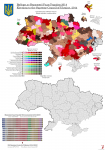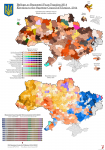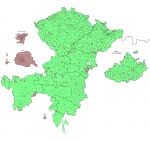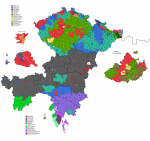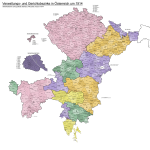A minor update to the Austrian map, at long last. Moravia still terrifies me, but I imagine I'll get to it eventually.
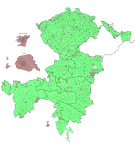
Austrian Silesia, as the name implies, was the portion of Silesia that remained in Austrian hands after the Seven Years' War. Its borders made no sense even in 1907, and that was after the horrifying mess of duchies and principalities that had previously made it up were abolished during the post-1848 reorganisations of the Empire. Its capital was the city of Troppau (
Opava in Czech, which is its current official name), and it consisted of two roughly equal slices of land, one of which straddled the northeastern border against German Silesia, while the other was a rough square bound by the rivers Biala in the east and Ostravice in the west. This meant there were urban areas along both its western (Ostrau/Ostrava) and eastern (Bielitz/Bielsko) borders, and this in turn ensured Austrian Silesia wasn't long for this world once the Empire collapsed. So did its ethnic composition - a plurality, though not a majority, of the duchy's population spoke German, mainly in the western half but also in a linguistic enclave around the town of Bielitz (this is why the area around Bielitz forms an exclave of district 10 on the electoral map), while Poles and Czechs both made up significant minorities. After the war, the majority of Silesia became part of Czechoslovakia, though the eastern half was split along the river Olza - this compromise border ironically splits yet another urban area in half, and the city of Teschen/Cieszyn/Těšín remains split down the middle between Poland and the Czech Republic to this day.
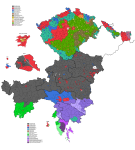

Politically, Silesia was similar to the mountainous regions of Bohemia - like them, it was a prosperous mining region, where class consciousness as well as national affiliation played far more significant roles in politics than the Church. In 1907, it was one of the strongest regions for the Social Democrats, who managed to elect members representing their German, Czech and Polish branches from different parts of Silesia. The towns, however, had a significant German nationalist presence, while German and Czech agrarian candidates were both able to win seats in more rural areas. In 1911, just as in Bohemia, it seems as though national feelings were on the rise, as the Social Democrats lost seats among all three nationalities, with the
Polish People's Party making their first appearance on our map (although they'd already won a significant number of seats in Galicia in 1907).
Also making their first appearance was the
German Workers' Party, who actually also won a couple of seats in Bohemia that I mistakenly identified as agrarians last time (DA vs DAP, easy mistake to make). This was a fairly odious collection of radical German activists from the industrialised parts of German Bohemia, Moravia and Silesia, who were convinced the mainstream German nationalist parties weren't doing nearly enough to combat the scourge of the Church, the capitalist class, the Slavs, the Jews and the Marxists. Exactly which of these groups they wanted to fight varied a bit over time, but suffice it to say it's not really an accident that their name was taken by the forerunners of the Nazi Party. They frequently used the term "national socialism" to describe their ideology, and indeed there were several attempts to add this phrase to the name of the party, but these were always defeated because of the risk of confusion with the similarly-named Czech party. After WWI, they did, in fact, add it, and the resulting DNSAP became a small but influential player in Sudeten German politics within Czechoslovakia, eventually forming the kernel of Konrad Henlein's Sudeten German Party.
